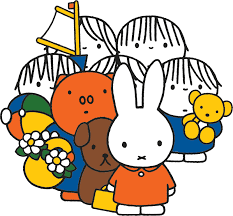RESEARCH Yr2
- Solar Chin
- Sep 17, 2024
- 4 min read
Oliver Jeffers
Oliver Jeffers is a Northern Irish artist born in Australia in 1997. After graduation from University of Ulster in 2001, he then went on to create his debut children's story book 'How to Catch a Star' in 2004 which received critical acclaim. He also wrote and illustrated 'Lost and Found' (2005), 'Incredible Book Eating Boy' (2007) and 'The Day the Crayons Quit' etc. Winning several awards: Blue Peters Award, Kate Greenaway Medal and No.1 on the New York Times Best Seller list.
Jeffer's art style is a use of mixed media and use of space composition; his font is sketchy and resembles crayon strokes with impactful short phrases. I like his artwork as it's easy to appreciate and incites powerful imagery like his refugee and environmental advocate work that shows that the most important messages don't need to be complicated to understand.
2. Maurice Sendak
Maurice Sendak was born in 1928 - 2012 to Polish Jewish immigrant parents in Brooklyn, New York. His childhood was affected by the unfortunate death of extended family due to the Holocaust which introduced him to the early concept of fatality of which some of his artwork may have been inspired by. When he was 12, he watched Disney's 'Fantasia' which inspired him to become an illustrator. He is best known for creating 'Where the Wild Things Are' (1963) receiving international acclaim, despite a lot of parents claiming that it was 'too grotesque' for children to read.
Sendak's art style is a kind of sketchy cartoonish realism. Features such as eyes, noses and limbs are exaggerated and he often features anthropomorphic animals in his work. Such figures have a large amount of hair which is represented with hundreds of sketchy strokes of which he also uses to base his shading work on. His work evokes a kind of gross and sickly emotion which he uses to create fear in his monstrous characters.
3. Theodore Seuss Geisel
Theodore Seuss Geisel was an American cartoonish and author born in 1904-1991. He is known for creating more than 60 books under the pen name 'Dr. Seuss' selling over 600 million copies worldwide and being translated into 20 different languages by the time of his death. After the war, he created works such as 'The Cat in the Hat' (1957) 'How the Grinch Stole Christmas!' (1957) and 'The Lorax' (1971). He received two Primetime Emmy Awards, Outstanding Animated Program etc.
Pre-war times, Dr Seuss' artwork was illustrated by pencil and watercolour, however, post-war he started using more solid mediums like markers, pens and ink. His humanoid figures are described as 'droopy' and 'rounded' and all his machinery and buildings are without usage of any straight lines, even when representing real life objects.
4. Tove Jansson
Tove Jansson was a Fennoswedish author and illustrator born in 1914-2001. She was brought up by artists parents and studied art from 1930-1938 in Helsinki, Stockholm and Paris. Jansson wrote the first Moomin book in 1945 'The Moomins and the Great Flood'. She then carried on with 'Comet in Moominland' 'Fin Family Moomintroll' which were each as successful and later won the Hans Christian Andersen Award in 1966 and the Selma Lagerloft Prize in 1992. The Moomin series has been adapted for theatre, cinema and opera. She also illustrated for classics like 'Alice in Wonderland'.
Before creating Moomin, Jansson focused on creating oil landscapes which is presented throughout the subsequently followed Moomin series. Although the characters themselves are painted with simplified features and colours, the backgrounds are often detailed: full of colour, lines and texture.
5. Jon Klassen
Jon Klassen was a Canadian writer, illustrator and animator born in 1981. He attended Sheridan College and graduated in 2005. After that, he went on to work on animations for noticeably large films such as 'Kung-Fu Panda' (2008), Coraline (2009) and the animated music video for U2's 'I'll Go Crazy If I Don't Go Crazy Tonight' (2009). It wasn't until 2012 when he created his first solo picture book 'I Want My Hat Back' that he won the American Caldecott Medal and the Kate Greenaway Medal; Klassen became the first person to win both awards for the same work.
Klassen creates artwork with a minimalistic style, simple shapes and lines. He tends to use quite muddy brownish greyish tones and colours with watercolour and ink. Simplicity means that children who read his book can understand it better, however adults who also read his books can also appreciate the underlying, more serious tones.
5. Dick Bruna
Dick Bruna was a Dutch artist and author born in 1927-2017. He created over 200 works of which his most notable creation was 'Miffy' or 'Nijntje' and her friends. All of Miffy's stories have four lines of rhyme and simple text; Bruna wrote these books with children in mind which meant that the art style was simple and easy to understand. His last piece of work was in 2017 'Miffy is Naughty', his 120th book.
His art style is easily identifiable by the solid primary coloured backgrounds and the thick black outlines drawn with a paintbrush. Miffy's mouth is in the shape of an 'X' and he often would simplify details until it was only recognisable as a pictogram. Bruna only used the colours red, blue, black and green; his red is usually a warmer orange and his yellow would be more red. Limiting his colour options created a style for children worldwide to easily recognise.































































Comments